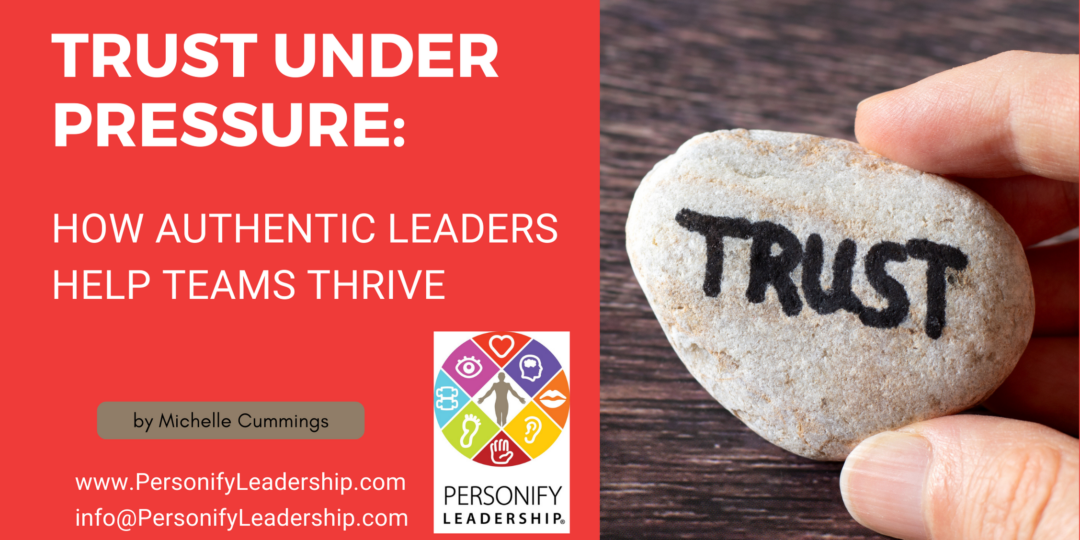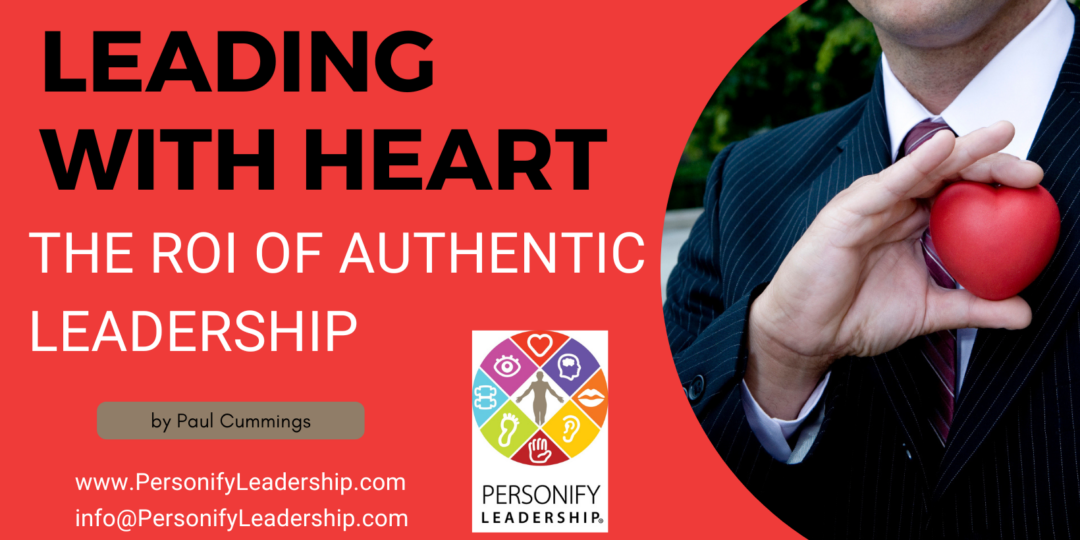Bridging the Intention–Behavior Gap
- Apr 03, 2025
- By personifyadmin
- In Newsletters
- 0 Comments
We all want to believe that good intentions make good leaders. And intention does matter—it’s where leadership begins. In our Heart of a Leader module, we focus on leading from a place of care, connection, and integrity. But intention alone doesn’t always shape the experience others have of us. That’s where the gap begins—the space between what we meant and what actually happened. That’s the intention–behavior gap, and we’ve all felt it on both sides.
Research by Rhodes, Pfaeffli Dale, and Mansell explores this very gap, showing that the strength of an intention plays a key role. Strong intentions are more likely to predict consistent behavior, and they tend to hold steady over time. But they also come with a risk: when an intention becomes too rigid, it can close us off to feedback or new perspectives. A leader may be so focused on achieving a goal that they stop noticing how their behavior is landing—or whether it still reflects their original values.
That’s why, in the Heart module, we teach leaders to pay attention to their signals—tone, posture, word choice, and energy. These are the silent messengers that often speak louder than our intentions. You may want to support your team, but if your voice is tense or your body language feels rushed, your intention won’t come through. This is where the Signal Check tool comes in. It’s a simple pause to ask, “What do I want people to feel right now, and does my presence reflect that?”
Another key strategy is using Intention to Impact thinking. Instead of just setting a goal, we encourage leaders to ask: What experience do I want others to have? This kind of reflection helps shift the focus from task to relationship, from outcome to impact. When we connect our intentions to how others feel and perform, our leadership becomes more human—and more effective.
And of course, none of us will get it right all the time. We will miss the mark. What matters most is noticing when our signals don’t align with our purpose and choosing to realign with intention. That choice, made moment by moment, is where trust is built and credibility is earned. Leaders who regularly reflect, adjust, and lead with heart make it easier for their teams to do the same.
Bridging the intention–behavior gap takes more than good ideas—it takes awareness and practice. But when leaders are willing to pause, reflect, and stay grounded in what truly matters, their actions begin to match their values. And that’s when leadership becomes transformational—not just for the leader, but for everyone they influence.
By Michelle Cummings
Founder, CEO & Chief Creative Officer
Personify Leadership
Trust Under Pressure: How Authentic Leaders Help Teams Thrive
- Apr 03, 2025
- By personifyadmin
- In Newsletters
- 0 Comments
Trust is the foundation of leadership—but it’s tested most when pressure is high. In the Heart of a Leader module from the Personify Leadership Core Program, leaders are taught to lead with clear intention: to act in the best interest of others and stay aligned with their values. Authenticity is not just about being “real”—it’s about showing up in a way that reflects who you are and what you stand for, even in difficult moments.
When stress rises and uncertainty creeps in, teams begin to look to their leader for cues. This is when trust is either reinforced or quietly eroded. The Heart Module challenges leaders to ask, “What signals am I sending?”—through tone, posture, presence, and action. If those signals match a leader’s stated intention, it builds stability and confidence. If they don’t, even small gaps in behavior can shake a team’s sense of safety.
Leaders who are aware of their signals and take time to reflect before acting are more likely to stay in alignment. When team members feel that their leader is grounded, honest, and consistent—even in high-stakes moments—they feel safer, more motivated, and more willing to speak up. That emotional safety is key to team engagement and performance. As the module teaches: people don’t just hear your intention—they feel it.
Of course, no leader gets it right every time. When trust is strained, it doesn’t have to stay broken. Leaders have many opportunities for making things right—starting with listening fully, owning the impact, and clarifying your true intention. Leaders who take responsibility and follow through with consistent actions don’t just repair relationships—they deepen them.
In times of pressure, your authenticity becomes your greatest tool. Teams thrive when they can trust that their leader’s values won’t disappear under stress. Leading with intention, acting with integrity, and staying present in the hard moments—that’s how authentic leaders build lasting trust.
~Michelle Cummings
Founder, CEO and Chief Creative Officer
Personify Leadership
Leading with Heart: The ROI of Authentic Leadership
- Mar 25, 2025
- By personifyadmin
- In Newsletters
- 0 Comments
“People don’t care how much you know until they know how much you care.” – John C. Maxwell
Great leadership isn’t just about strategy, goals, or results. It’s about people.
When you lead from the heart, you create a culture where trust, passion, and purpose thrive—and that’s where real success happens. Have you given much thought to what bad leadership costs organizations?
The Heart of a Leader: The ROI of Authentic Leadership
In today’s competitive business landscape, leadership is often reduced to performance metrics and revenue targets. While these are essential, they overlook a critical foundation—intentional leadership that fosters trust, engagement, and purpose. At the core of this approach is the Heart of a Leader, a key principle in the Personify Leadership curriculum.
Leading with Heart: More Than Just a Concept
Leading with Heart isn’t about sentimentality; it’s about deliberate action that builds trust, strengthens teams, and drives long-term success. Authentic leadership goes beyond transactional management, cultivating real connections with employees, customers, and stakeholders. When leaders act with integrity and intention, they inspire meaningful performance improvements that directly impact the bottom line.
The Business Case for Intentional Leadership
In an era where employees seek purpose over paychecks, leadership style plays a decisive role in organizational success. Recent research from Gallup shows that companies with engaged teams outperform competitors by 147% in earnings per share. This success stems from leaders who create psychological safety, trust, and a sense of belonging.
Intentional leaders prioritize relationships over transactions, ensuring employees feel valued. This effort leads to higher productivity, lower absenteeism, and greater innovation. Moreover, turnover—a costly challenge for businesses—decreases significantly when leaders demonstrate care and recognition. Considering that replacing an employee costs 50% to 200% of their salary, the financial benefits of strong leadership are undeniable.
Employee Engagement as a Strategic Advantage
The best organizations understand that engagement is not a perk but a competitive edge. Leaders who invest in employee well-being and professional growth create workplaces where people are motivated to perform at their best.
Recognition is a powerful tool—employees who feel appreciated are likelier to stay, collaborate, and take initiative. A simple thank-you or public acknowledgment can significantly boost loyalty and productivity. Additionally, trust-based leadership reduces workplace stress, a leading cause of burnout and disengagement. Organizations with people-first cultures report up to 70% lower stress-related absenteeism, ensuring employees remain present and invested.
Beyond Employees: The Customer and Stakeholder Impact
The impact of intentional leadership extends beyond employees to customers and stakeholders. Organizations with strong leadership values build brand loyalty, enhance reputation, and attract high-value partnerships. Customers who connect with a company’s mission are more likely to remain loyal, advocate for the brand, and increase spending.
Studies show that businesses with ethical leadership retain 23% more customers and generate 21% higher profitability than competitors. Why? Because integrity-driven leadership fosters reliability and trust, making customer experiences more consistent and authentic.
The Measurable ROI of Leading with Intention
Leadership development programs, such as Personify Leadership, equip leaders with the tools to lead authentically and effectively. The return on investment (ROI) is tangible, delivering:
· Lower turnover costs through higher employee retention
· Higher productivity as engaged employees perform better
· Reduced absenteeism and healthcare costs from lower workplace stress
· Stronger customer loyalty and revenue growth through enhanced reputation
In a competitive market, people-first leadership isn’t just the right thing to do—it’s a financial imperative. Sustainable success isn’t just about results; it’s about how those results are achieved.
Final Thoughts: Leadership as a Competitive Advantage
Organizations that foster intentional, heart-centered leadership create workplaces where employees thrive, customers stay loyal, and financial performance soars. Leading with Heart is not a “soft skill”—it’s a strategic necessity.
Great leaders recognize that performance reflects culture, and culture is shaped by leadership. When leaders demonstrate trust, care, and integrity, they create an environment where people contribute, innovate, and stay committed to the company’s mission.
The most significant competitive advantage an organization can have is its people. The best way to maximize that advantage is by leading with intention, Heart, and a commitment to long-term success.
~Paul Cummings, Chief Operations Officer
Tag: Authentic Leadership
© 2012-2025 Personify Leadership. All Rights Reserved.




Recent Comments